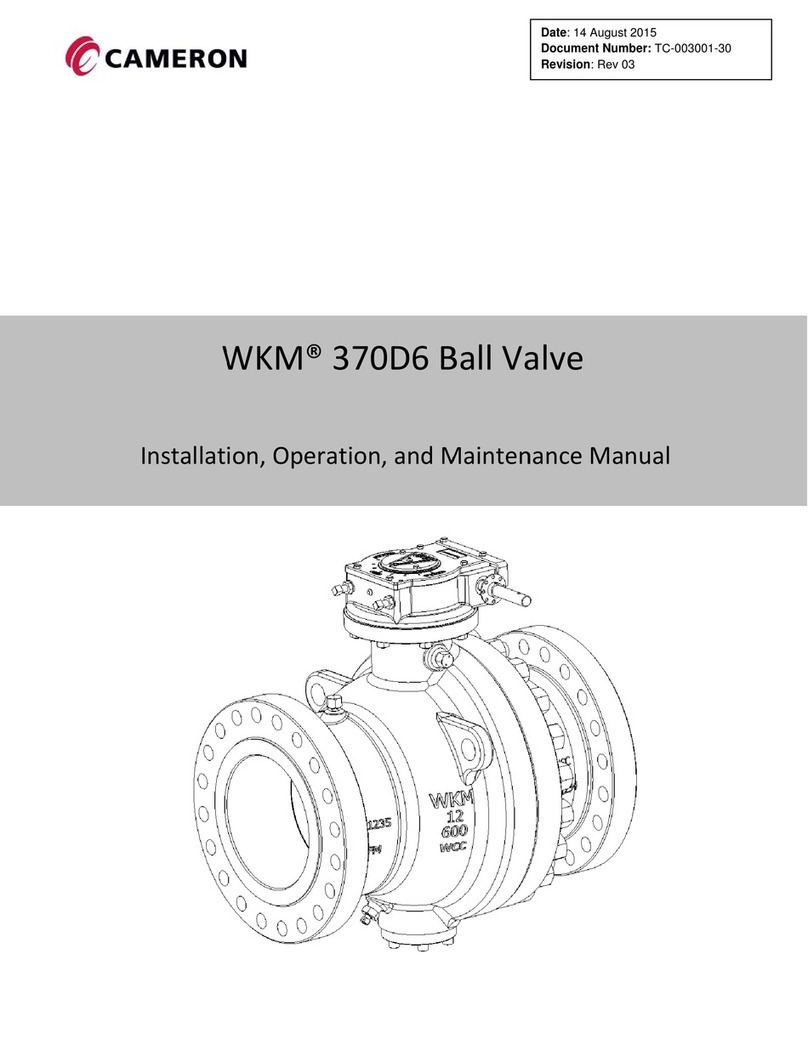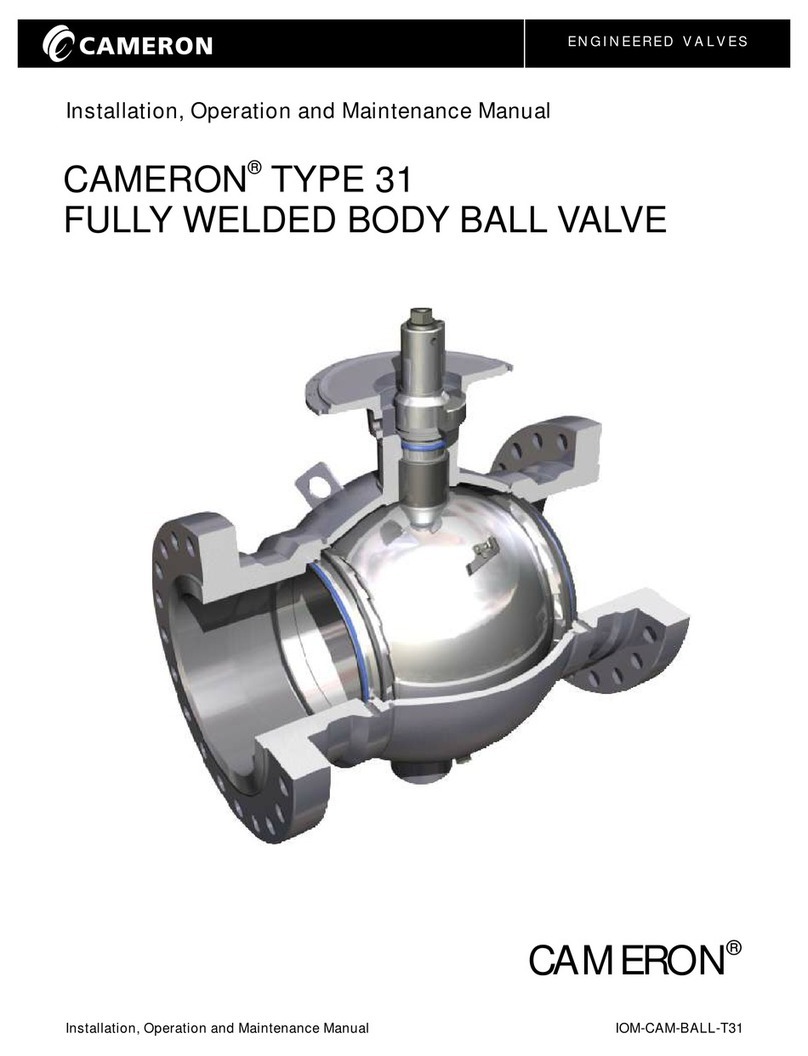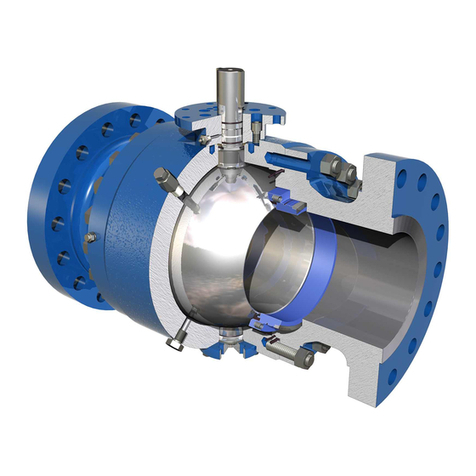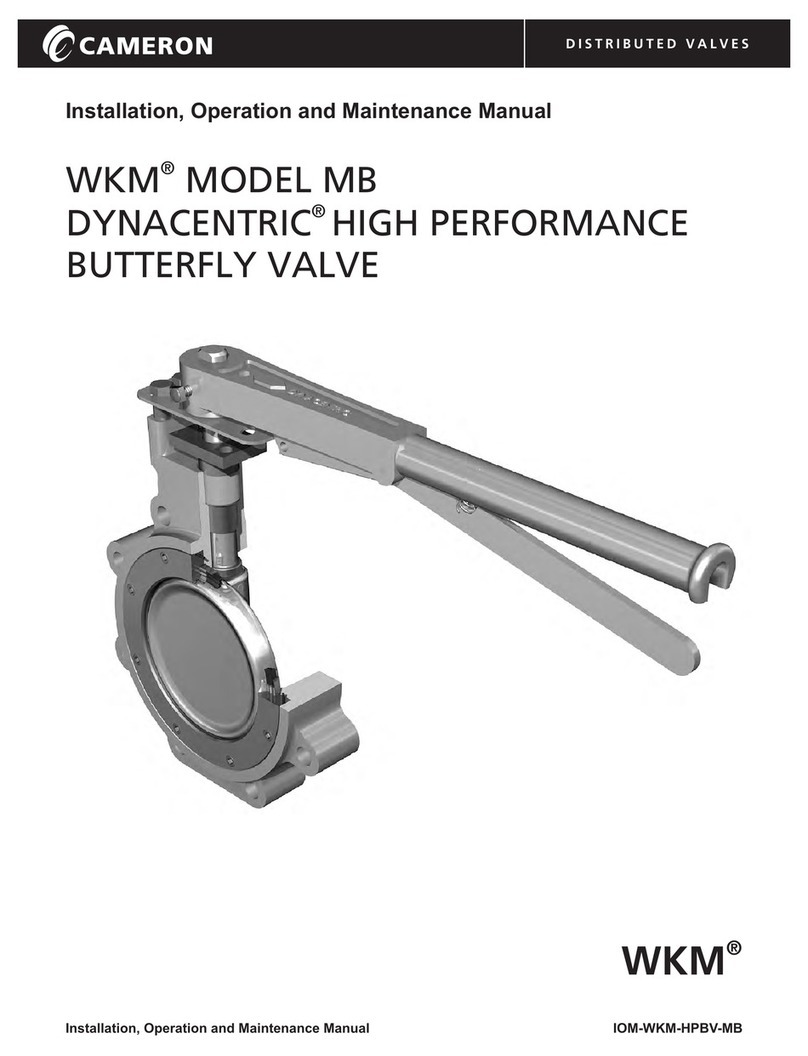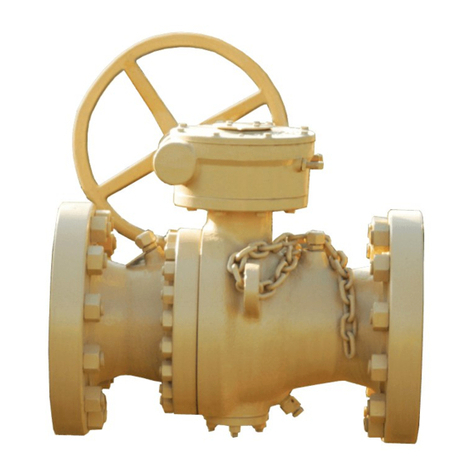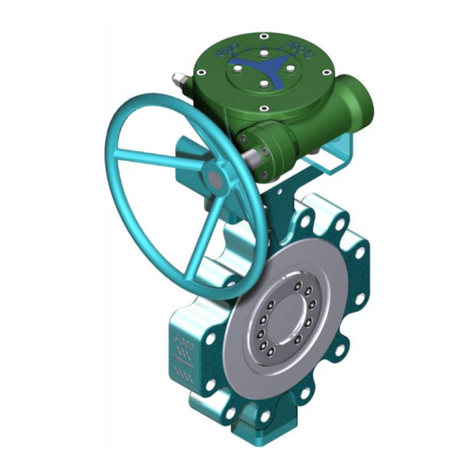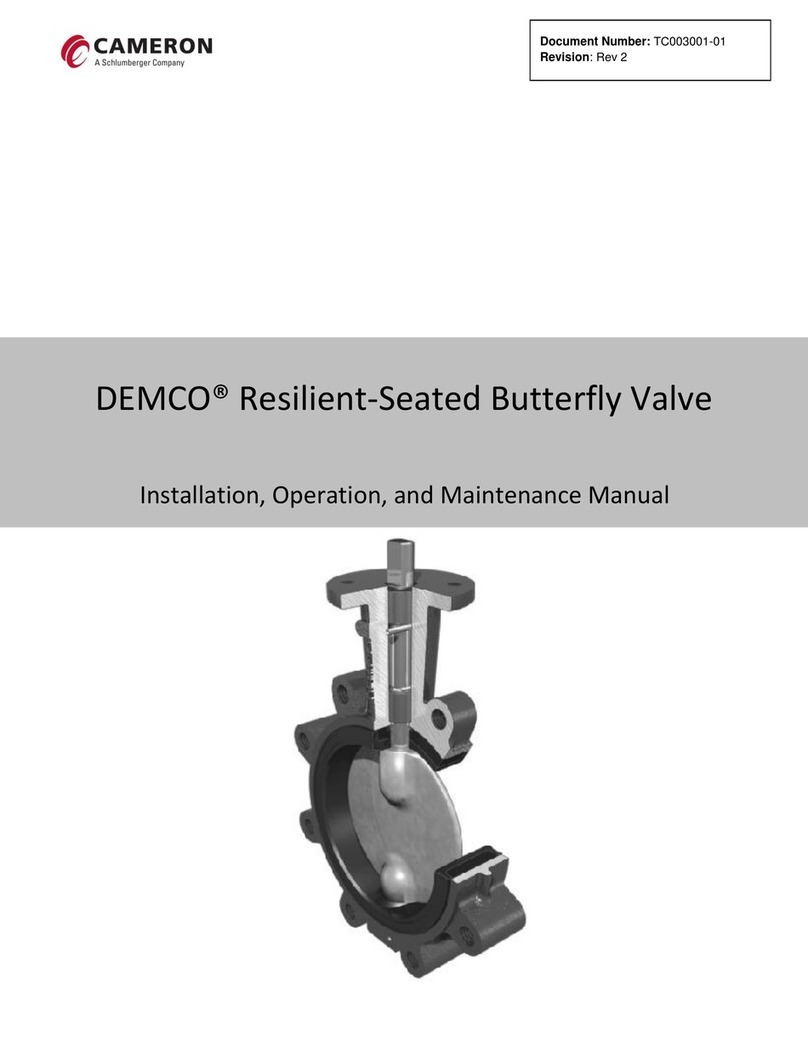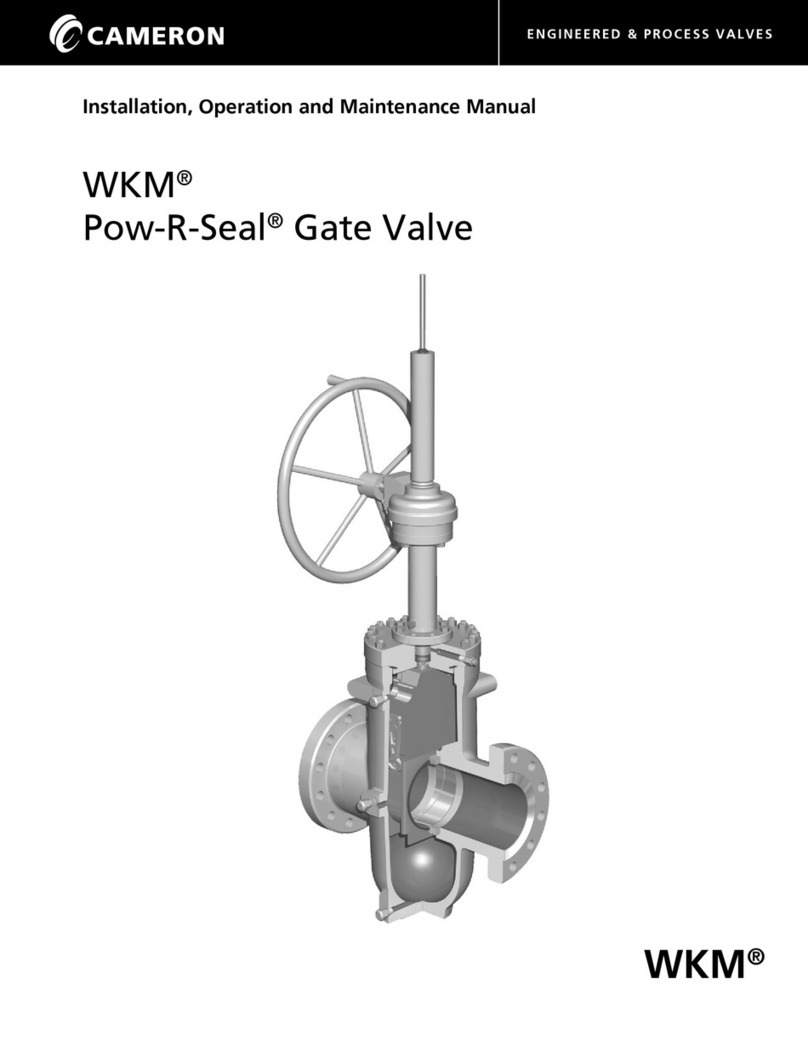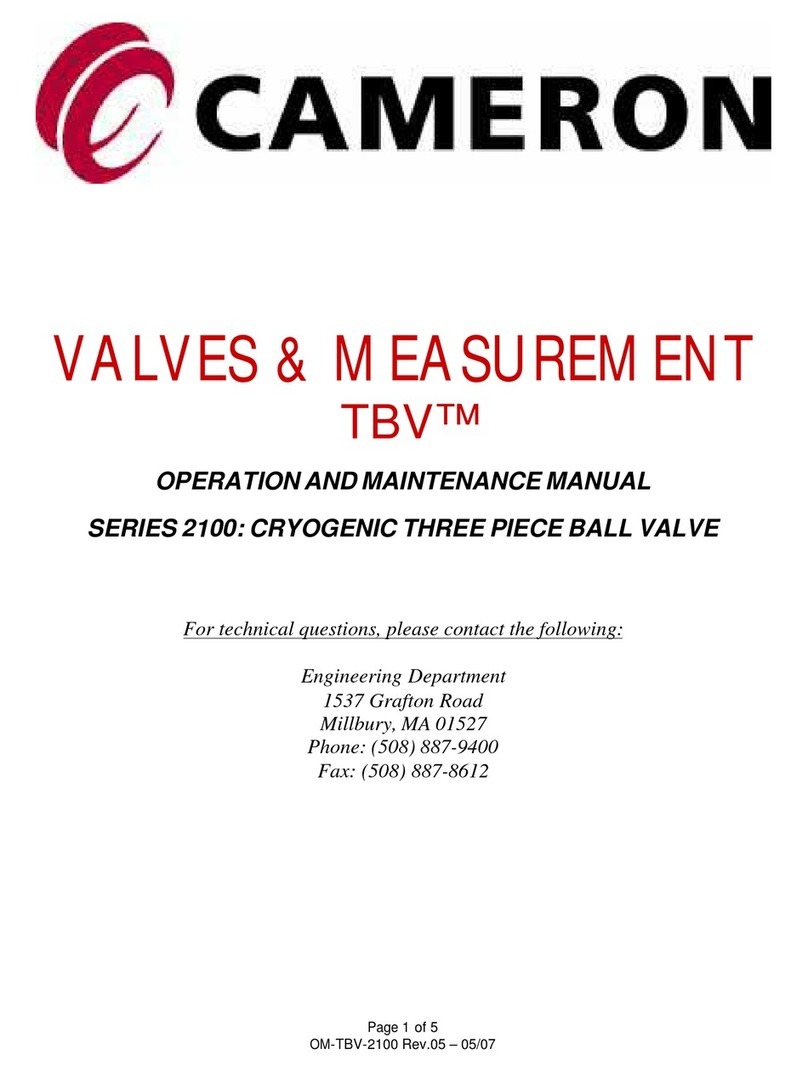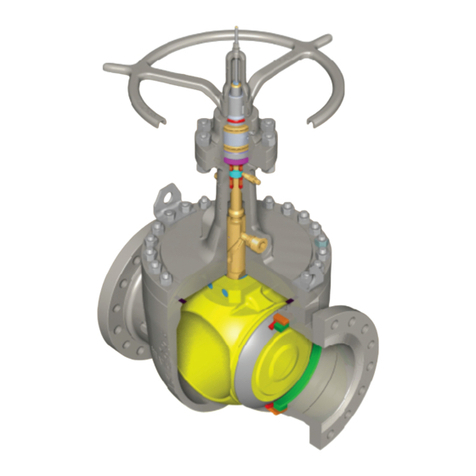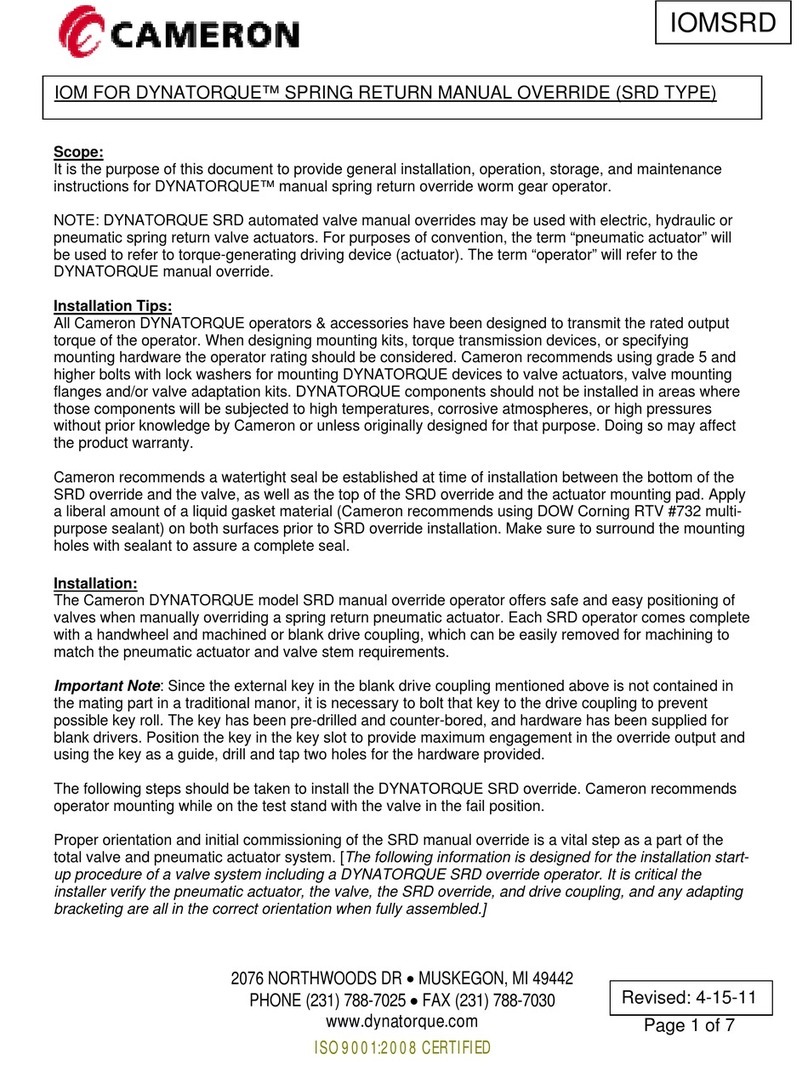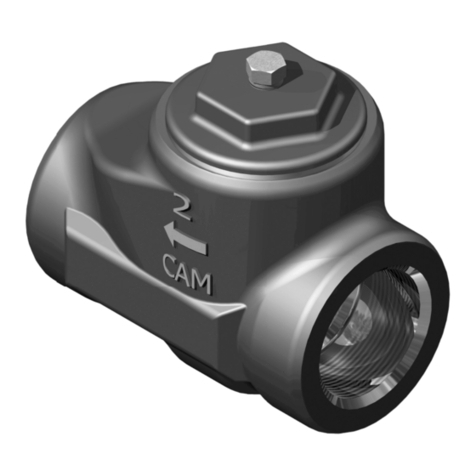
Installation, Operation and Maintenance Manual Pg 3 of 4
W-K-M DynaSeal 210F Ball Valve
Installation, Operation and Maintenance Manual Publication
TC1417
Flanged-End valves may be bolted into the line
using two open or boxed end wrenches.
1. Threads of flange bolts and nuts should be
lubricated to obtain maximum loading of bolts.
2. Finger tighten all nuts first.
3. When tightening bolts, use the crisscross method
and torque each bolt to ANSI or gasket manufac-
turers specifications.
Threaded-End valves are installed using two pipe
wrenches, one on the flats of the tailpiece adjacent
to the pipe being installed and the other on the
pipe. DO NOT apply wrench to the body section or
opposite side tailpiece as this may result in the
tailpiece turning and transmitting torque to the
valve body.
Field testing, if performed after the the valve has
been properly installed into the line, should be done
in accordance with the following procedure:
Caution: Ensure that all test fluids contain corrosion
inhibitors and are compatible with valve seat and
seal material.
1. Preliminary Testing – Completely flush the
system or the line to minimize damage to the
seats and ball surface which might be caused by
weld slag or other foreign matter resulting from
installation procedures.
2. Line Testing – When performing this test, the
valve should be in the half-open position to
ensure that the body cavity is completely filled
with the test media and to prevent accidental
over pressure of the seats. NOTE: Line may be
tested at a maximum of 1 1/2 times the valve’s
cold working pressure rating without consulting
the factory.
3. Seat Testing – When testing the seats with the
valve in the closed position, do not exceed the
valve’s cold working pressure rating.
4. Upon completion of testing, purge all test fluids
from the valve.
Operation
DynaSeal 210F ball valves operate from fully
open to fully close by a 90 degree turn of the
handle. The handle aligned with the pipe
always means the valve is open and with the
handle perpendicular to the pipe means the
valve is closed. Additionally, the stems have
flats that align the handle and can be used to
indicate ball position. The bore of the ball is
parallel with the faces of the stem flats.
DynaSeal 210F valves may be power actuated.
Pneumatic and hydraulic actuators, whether of
the fail-open, fail-close, or fail-last position type,
have “OPEN-CLOSE” indicators on the top of
each unit. On a pneumatic actuator, make sure
filters and lubricators (if recommended by the
actuator manufacturer) are installed prior to
valve and actuator installation.
Should any
maintenance be necessary, obtain the part number
from the unit’s nameplate and contact Cameron
or the nearest representative.
Routine Maintenance
Due to its design and simplicity the 210F ball
valve requires very little maintenance. Its
non-lubricated, self-cleaning ball can provide
reliable, leak free performance over a long
period of time.
